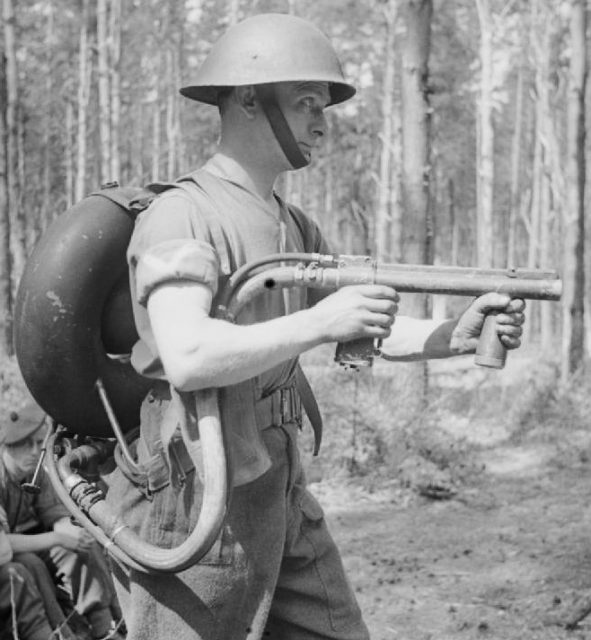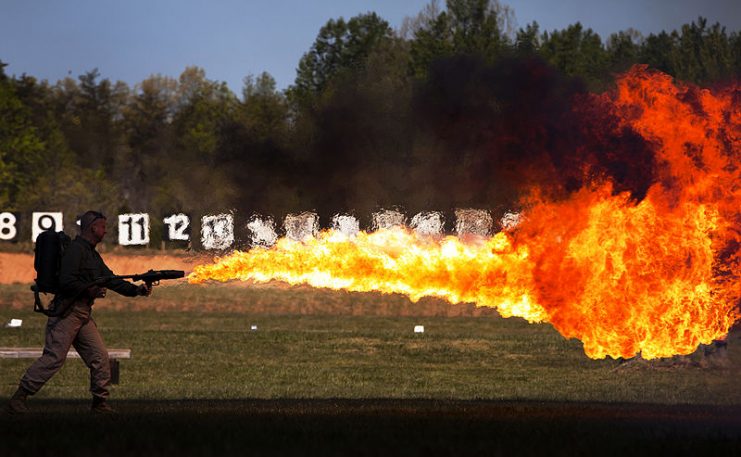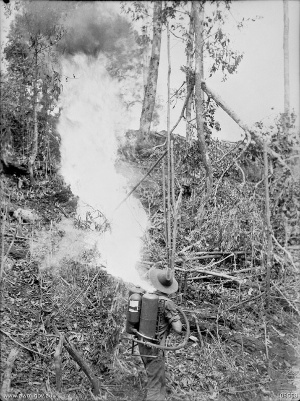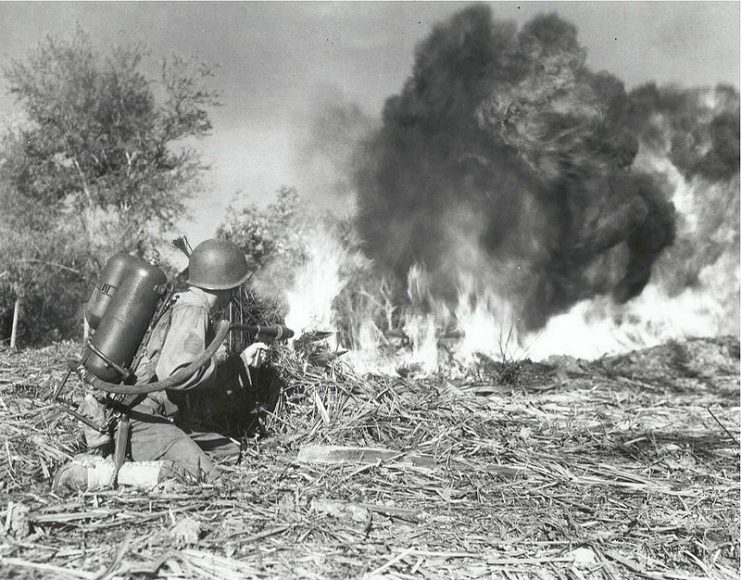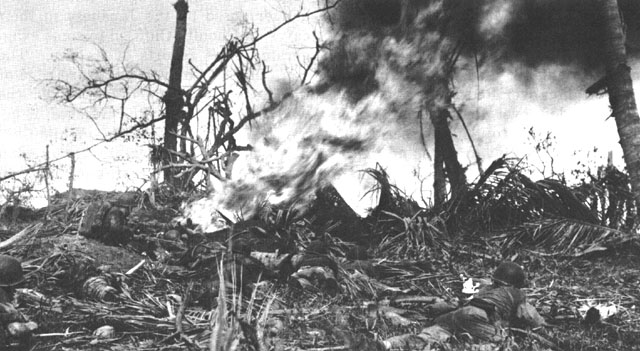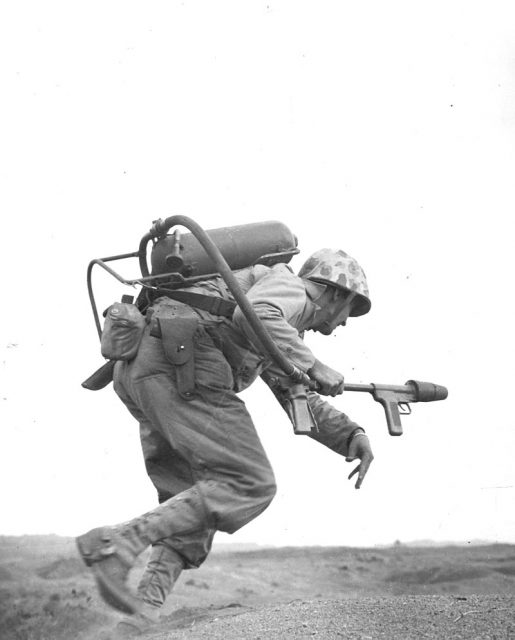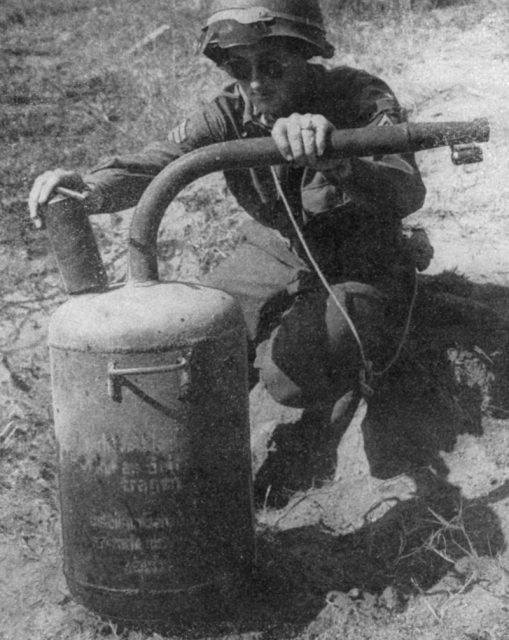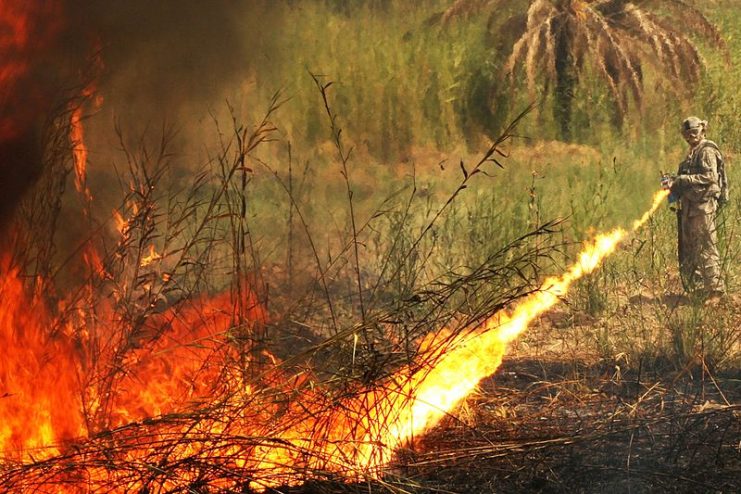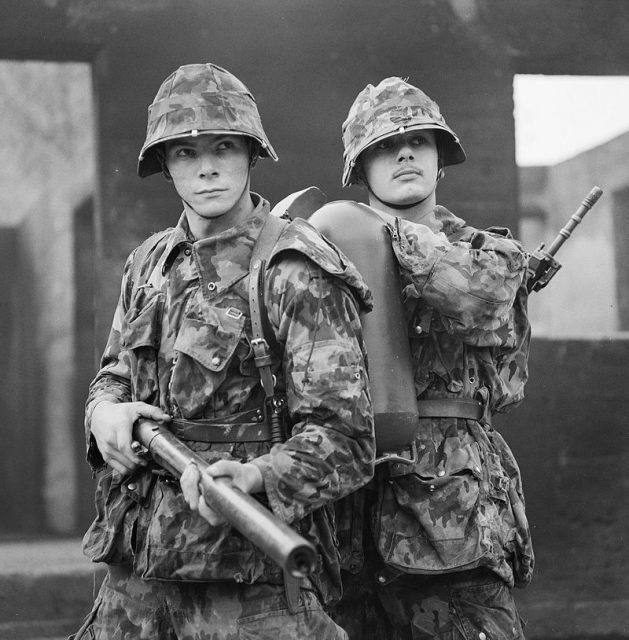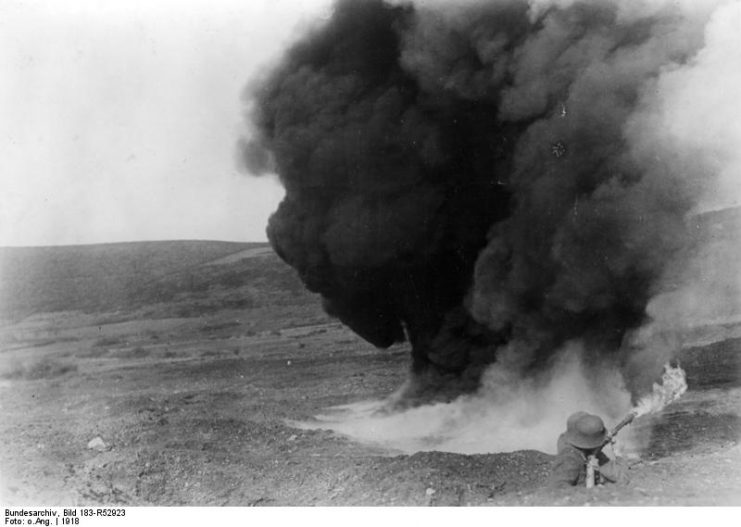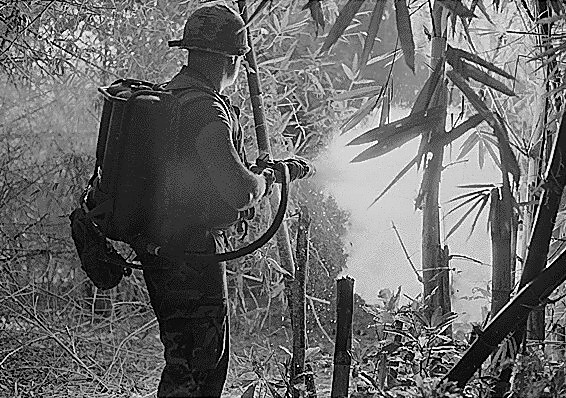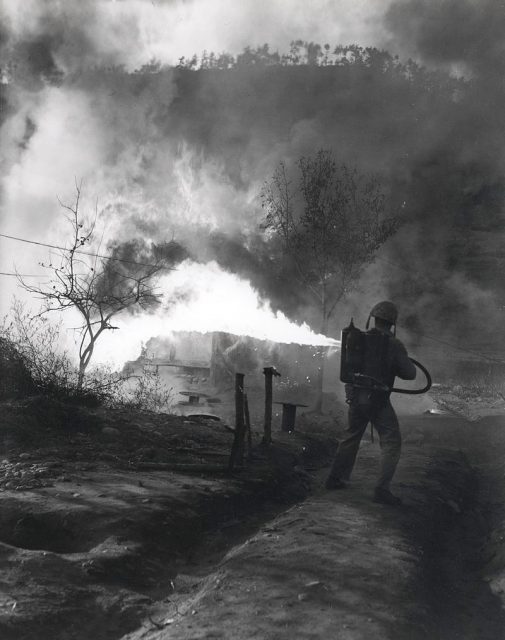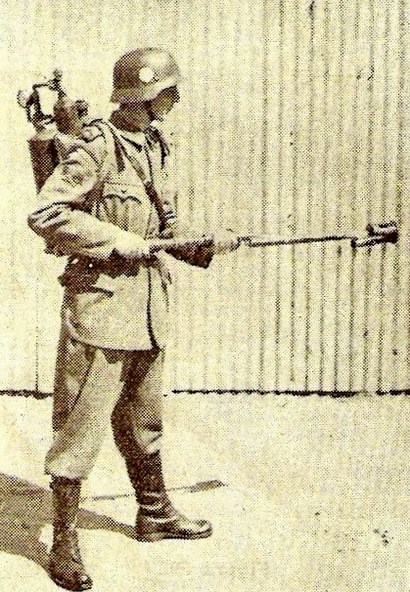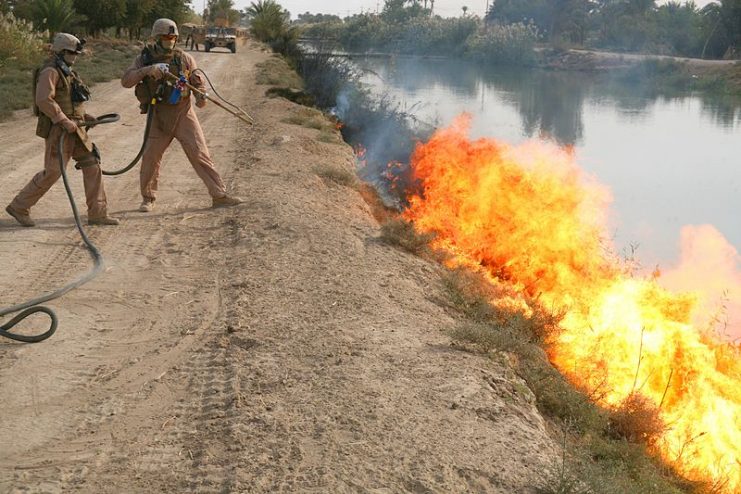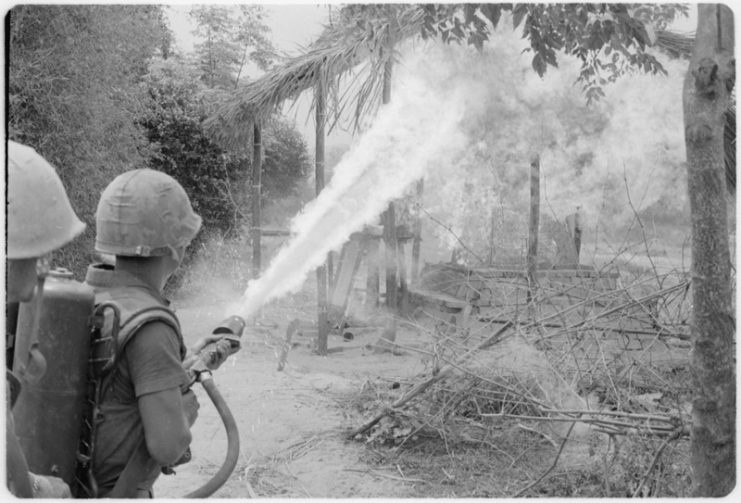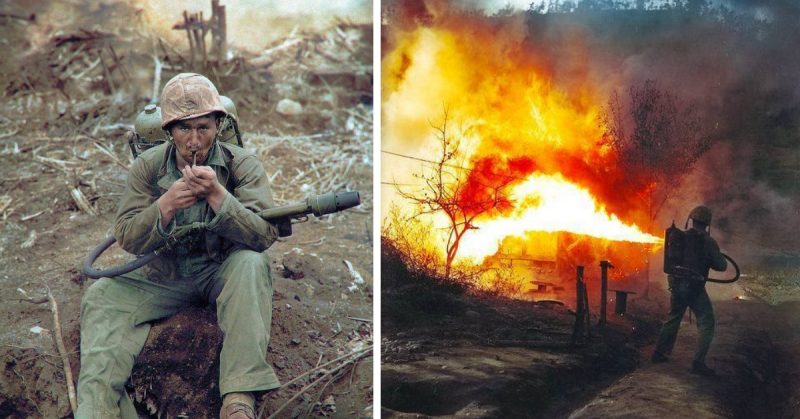The first use of a flamethrower was recorded by the Greeks in the first century AD. Clearly, the fear of fire is inherent in both man and beast, and history weighs heavy with devastating tales about fires. During ancient battles, the skies would show trails of smoke as burning arrows and blistering boulders rained from one side of the battle line upon enemies on the other side, scattering their formations.
The Greeks took the use of fire a notch higher in the Peloponnesian Wars, shooting blazing liquid at enemies using giant bellows and creating the legacy of the Greek fire. This would set the basis for a longer-range, more controllable fire sprayer which would become known as the flamethrower.
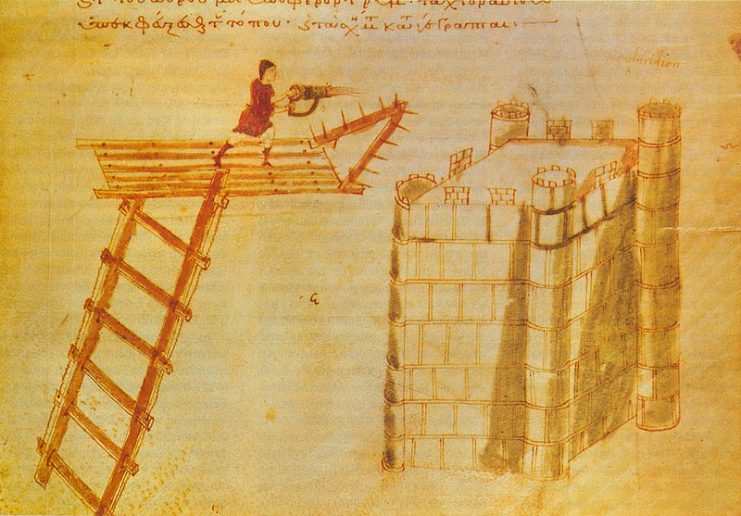
The modern flamethrower as we know it was first developed by a German scientist, Richard Fiedler, who made the weapon into a portable device comprising a two-section cylinder filled with pressurized gas in the lower end and flammable oil in the upper end. Another element of the flamethrower was the steel nozzle, which had an igniting wick attached to it, and a rubber tube linking it to the cylinders.
Fiedler’s flamethrower could spew flames and thick clouds of smoke over a distance of 20 yards using a burst firing technique. However, the flamethrower used by the Germans during World War I was developed by a Hungarian named Gábor Szakáts.
This invention ultimately caused Gabor to be deemed a war criminal–he was sought after by France after the war, and when he died, his birthplace, Budapest, refused to allow him to be buried there.
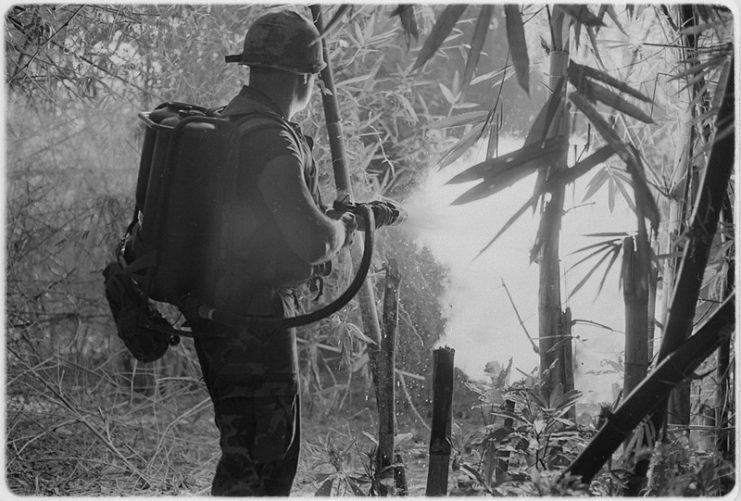
The flamethrowers used by the military made use of liquid fuel which was usually thickened with napalm. Its fires stuck to its victims, and couldn’t be easily rinsed off by water. Also, the napalm served as a deoxygenating agent, asphyxiating its victims.
After adopting the flamethrower, Germany would in 1911 create a military regiment around the weapon. The French were the first to witness the havoc wrought by the “Flammenwerferapparaten,” outside Verdun during the First World War. German shock troops would again make effective use of their flamethrowers in 1915 against British forces at Hooge.
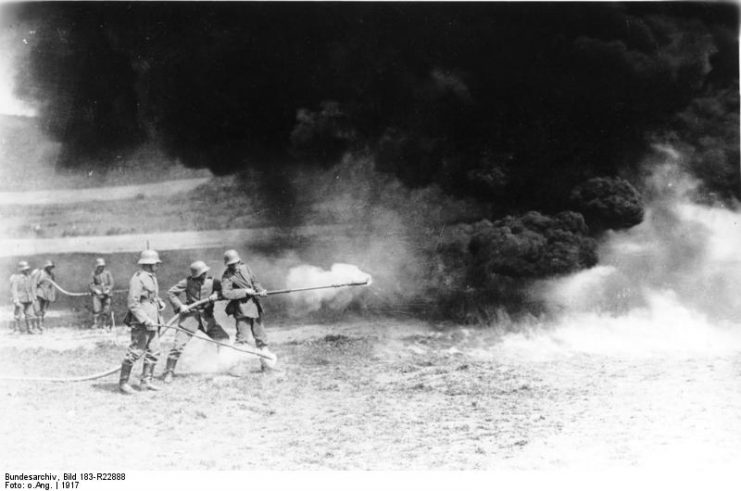
The Allies, after investigating the weapon, returned the favor using flamethrowers of their own.
By the end of WWI, about three hundred battles featured the use of flamethrowers by the German army, which deployed flamethrower operators in groups of six.
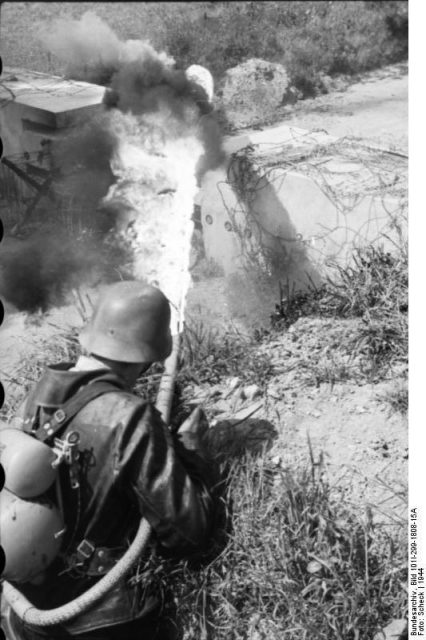
By the time World War II began, the physical and psychological effects of the flamethrower were known, so it was used often during the war by both Axis and Allied forces. The Korean and Vietnam wars also saw extensive use of this weapon.
The flamethrower, however, has been listed among the most controversial weapons in history. They were heavy, causing strain and mobility issues for its operators. Also, flamethrower operators were easily singled out as targets immediately after firing due to the visibility of the weapon. Its tendency to explode did not make things easier for its operators.
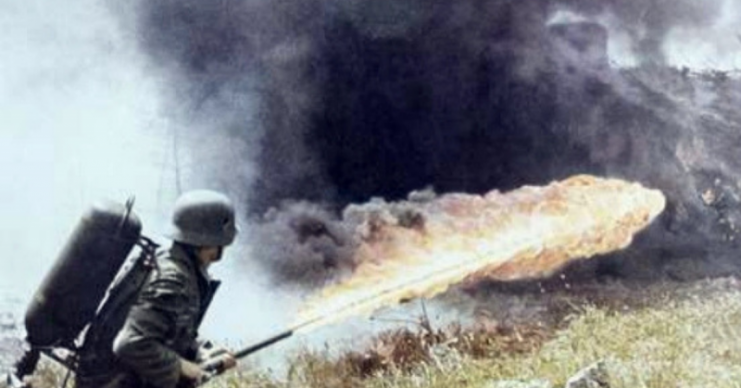
Its range was also in need of improvement as it was only effective for close combat. This brought about the idea of mounting flamethrowers on vehicles as a more effective way to use them.
Outside of the military, the flamethrower has been used by private owners in agriculture and other forms of land management where controlled burning is required.
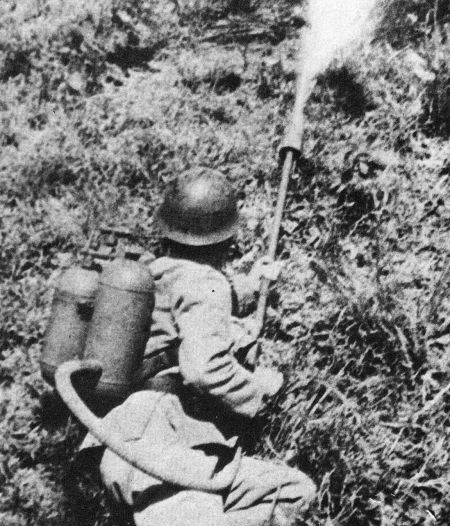
Generally, there have been calls around the world for the removal of flamethrowers from military arsenals, but its discontinuation has not been implemented everywhere.
The American military voluntarily stopped using them in 1978, but private ownership was not banned. In Great Britain, the Firearms Act of 1968 banned the use of flamethrowers. Even so, in 1994 a tragic event occurred in Sullivan Upper School in Upper Ireland when a man attacked pupils at the school using a flamethrower.
